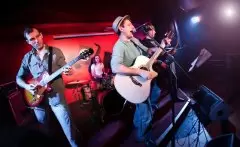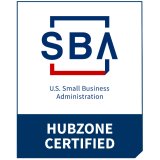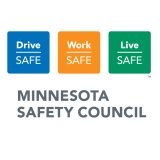Helping Musicians Protect Their Hearing

The U.S. Bureau of Labor Statistics estimates that over 200,000 Americans work as professional musicians, singers, and music directors. Many more are employed as music teachers, audio engineers, band crew members, and nightclub DJs. Because their livelihood depends on excellent hearing, many music professionals are taking note of the potential risks of prolonged sound exposure. The National Institute for Occupational Safety and Health (NIOSH) has published a new guideline to help musicians and those who work in the music industry protect their hearing.
NIOSH's new guideline was initiated in response to a series of sound exposure studies of teachers and students involved in music classes and marching bands. NIOSH researchers found that performances and rehearsals often exceeded 90 dBA, sound levels capable of causing permanent hearing damage for students and teachers with sufficient exposure. Countless studies have also shown that sound levels at concerts and night clubs can exceed safe levels, a special concern for professionals who practice and perform many hours a week.
To help reduce the risk of developing hearing loss and tinnitus (ringing in the ears), NIOSH recommends that musicians, employers, schools and music venue operators:
• Implement a hearing conservation program that includes training and routine hearing tests.
• Increase distances between individuals and instruments when feasible.
• Play music and sound amplification systems at lower levels.
• Encourage participation in educational and awareness campaigns on music-induced hearing loss.
• Identify hearing protection solutions that work best for individual musicians and related workers.
A special challenge for musicians can be their reluctance to wear hearing protectors. As a general rule, traditional earplugs and earmuffs block out more high frequency (pitch) sounds than low frequencies. Musicians often complain that their ability to monitor music is compromised because the treble is cut more than the bass. Newer high-tech hearing protectors can provide a solution. Specialty hearing protectors offering "uniform-attenuation" are designed to preserve the frequency balance of sound. The result is that attenuated sounds have roughly the same quality as the original sounds, only quieter. Uniform-attenuating hearing protectors are an excellent solution for workers needing to understand speech communications in noise, as well as musicians who insist on the highest sound fidelity possible.
For more information and helpful resources for music exposures, see:
NIOSH (2015). Workplace Solutions: Reducing the Risk of Hearing Disorders among Musicians.
NIOSH (2012). Health Hazard Evaluation: Noise exposures in school music classes and marching band rehearsals.
Chasin (2008). Musicians and the Prevention of Hearing Loss: An Introduction. Audiology Online.
CavCom SoundBytes. Benefits of Uniform Attenuation.
| Category: | Non-Occupational/General Interest |





